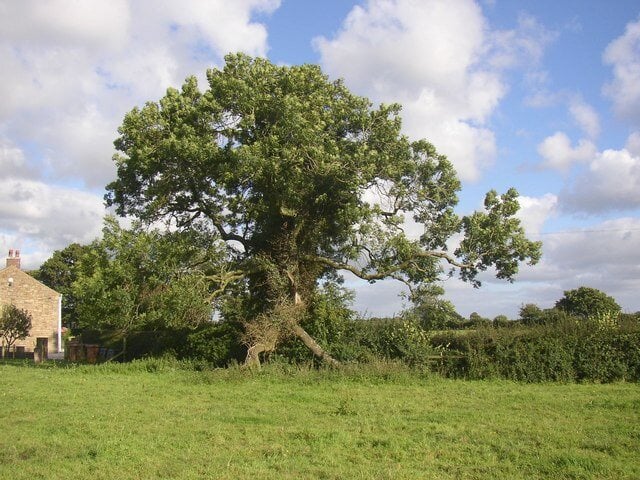Ash trees, those tall, graceful giants that dot the British countryside, are showing signs of fighting back against a deadly disease that has threatened their existence. A new scientific study reveals that these trees are naturally evolving greater resistance to ash dieback, a devastating fungal infection that has killed millions of trees since its arrival in Britain in 2012.
What are ash trees?
Ash trees belong to the Fraxinus genus in the olive family. They’re easily identified by their opposite branching pattern and compound leaves with 5-11 leaflets. Growing up to 35 meters tall with a distinctive domed canopy, ash trees can live for around 300 years.
These trees play a vital role in Britain’s ecosystem as a “keystone species” supporting over 950 other species, including 550 lichens, 240 invertebrates, and various birds and mammals. Some 44 species are found exclusively on ash trees.
The wood of ash trees is prized for its strength, flexibility and resilience. It’s commonly used to make baseball bats, tool handles, furniture, flooring, and even car frames. The Morgan Motor Company in Britain still uses ash wood for its car frames today.
The ash dieback threat
Ash dieback, caused by a fungus called Hymenoscyphus fraxineus, originated in Asia and was introduced to Europe about 30 years ago. It reached Britain in 2012 and quickly spread to every corner of the country. Early predictions suggested up to 85% of Britain’s 150 million ash trees could succumb to the disease.
The fungus slowly destroys trees’ ability to transport water, causing withered leaves and eventually killing the tree. The economic cost to the UK has been estimated at £15 billion over 100 years due to the loss of vital ecosystem services.
The scientific breakthrough
Scientists from the Royal Botanic Gardens, Kew, and Queen Mary University of London have discovered that ash woodlands are naturally evolving greater resistance to the fungal infection. By comparing DNA of trees established before the fungus arrived with younger trees growing naturally in woodlands, researchers found subtle but significant shifts in genetic variants associated with tree health.
Similar Posts:
Professor Richard Nichols of Queen Mary University noted, “A tragedy for the trees has been a revelation for scientists: allowing us to show that thousands of genes are contributing to the ash trees’ fightback against the fungus.”
The study, published in the journal Science, represents the first convincing proof of Charles Darwin’s prediction that significant changes in organisms can result from natural selection driving many small genetic changes simultaneously.
Why ash trees can evolve quickly
Unlike elm trees, which were devastated by Dutch elm disease, ash trees produce an abundance of seedlings. A single mature ash can produce up to 100,000 seeds every two years. This provides a vast, genetically diverse population upon which natural selection can act.
When young trees grow through leaf mould where the fungus replicates, about 30% are killed by ash dieback. This creates strong selective pressure, allowing only the most resistant trees to survive and reproduce, accelerating the natural selection process.
The path forwarde not found
Despite this promising discovery, scientists emphasize the need for “cautious optimism.” Dr. Carey Metheringham warns that natural selection alone might not be enough to fully save the species. The existing genetic variation in ash populations might be too low, and as trees become scarcer, the rate of selection could slow.
Rebecca Gosling of the Woodland Trust highlighted that these findings “give us hope for the future of our ash populations” and underscore the importance of supporting natural regeneration in woodlands as a key management strategy.
This remarkable scientific discovery not only offers hope for the future of Britain’s beloved ash trees but also provides a real-world demonstration of evolution in action.



















